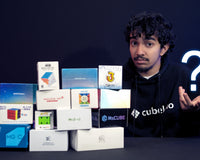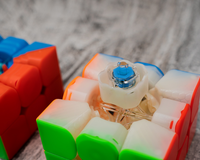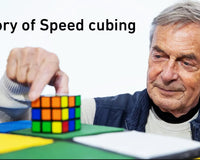Introduction
If you’ve been cubing for a while, you probably know the basics of notation, stuff like R, U, L, and all that. But when you start learning more advanced algorithms or tackling puzzles beyond the standard 3x3, things can get a little trickier. That’s where advanced cube notation comes in. This guide will break it all down in a simple, no-nonsense way. Let’s get into it!
1. Recap of Basic Notation
Before diving into the fancy stuff, let’s do a quick refresh:
- R, L, U, D, F, B – These represent the six faces of the cube: Right, Left, Up, Down, Front, and Back.
- R', L', U', etc. – The prime symbol (‘) means turning the face counterclockwise.
- R2, U2, etc. – The number 2 means a double turn (180 degrees).

If you already know this, great! Now, let’s move on to the more advanced notation used in bigger cubes and other events.
2. Wide Moves (Rw, Uw, etc.)
In bigger cubes (4x4 and up), sometimes you need to turn two layers at once. That’s where wide moves come in:
- Rw, Uw, Lw, etc. – The lowercase 'w' means you turn two layers together. So Rw is like turning R and the inner layer next to it.
- Rw', Uw', etc., follow the same rules as regular notation.

On some sites or tutorials, you might see these written as r, u, l, etc., instead of Rw, Uw, Lw. Both mean the same thing!
3. Slice Moves (M, E, S)
Slice moves involve turning the middle layers of the cube without affecting the outer layers:
- M (Middle) – The layer between L and R, moves like an L turn.
- E (Equator) – The layer between U and D, moves like a D turn.
- S (Standing) – The layer between F and B, moves like an F turn.

These are super useful in blindfolded solving and some speedcubing algorithms!
4. Rotation Notation (x, y, z)
Sometimes, instead of just turning a face, you need to rotate the entire cube. That’s where x, y, and z come in:
- x – Rotate the cube like an R move.
- y – Rotate the cube like a U move.
- z – Rotate the cube like an F move.
5. Advanced Big Cube Notation
For really big cubes (5x5 and beyond), you’ll see moves that specify exact layers:
- 3Rw, 3Uw, etc. – The number in front tells you how many layers to move.
- Inner layer moves – Sometimes, you’ll see just r, u, l for turning a single inner layer.
The key is to understand what each move is affecting so you don’t get lost in algorithms!
6. Special Notation for Other Cubes
Some other WCA puzzles use their own notation systems. A few examples:
- Square-1 – Uses a (x, y) format where x and y represent how much the top and bottom layers turn.
- Megaminx – Uses moves like R++ (two clockwise turns) and R-- (two counterclockwise turns).
- Clock – Uses notation based on pin positions and dial movements.
If you’re getting into different puzzles, it’s worth checking out their unique notation systems! Happy cubing!






























